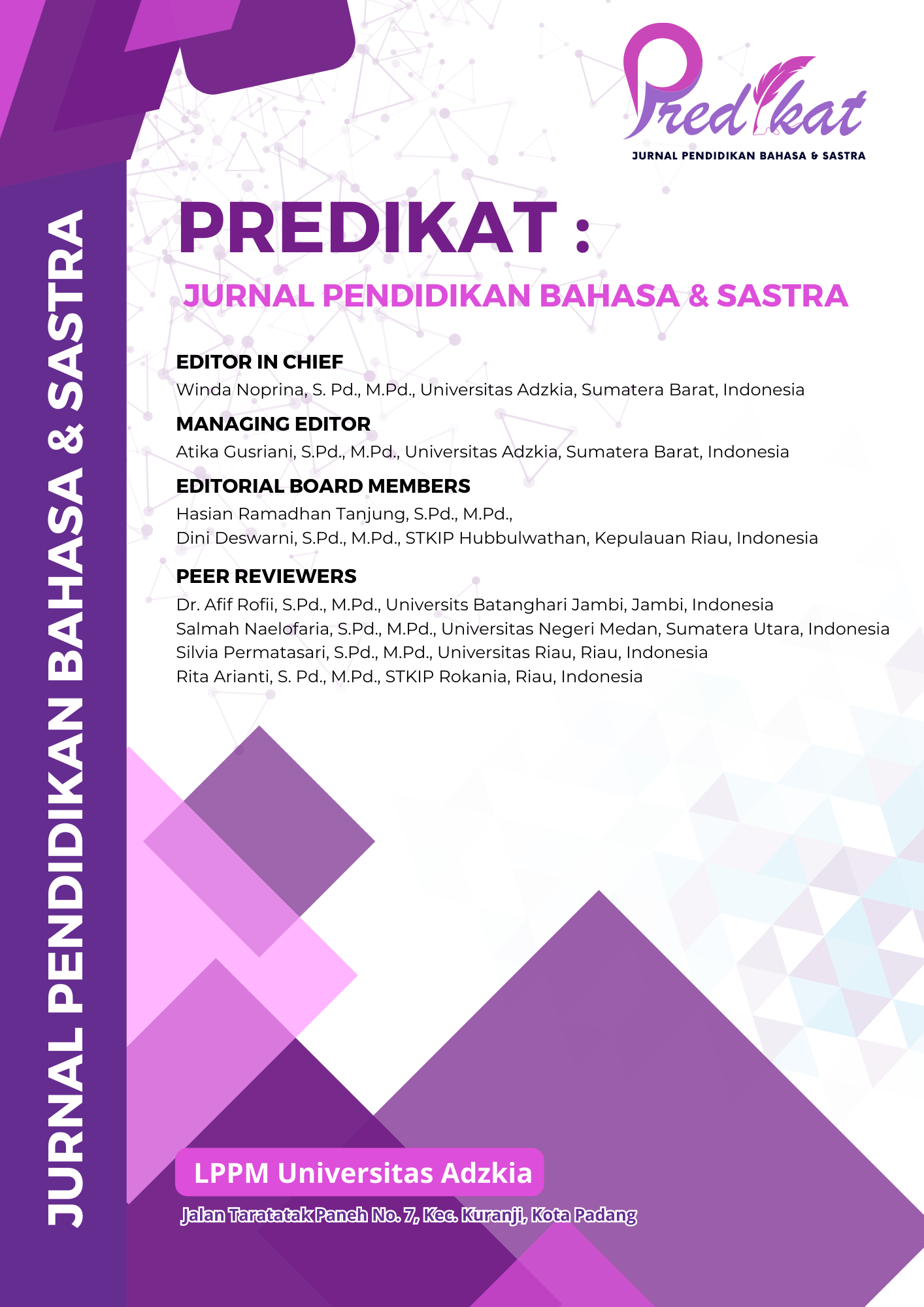Analisis Perkembangan Kosakata Verba pada Anak Usia 3-5 Tahun Melalui Media Youtube Kids
Abstract
Along with the development of technology and social media, it is becoming easier for hoaxes to spread quickly on various platforms. Hoaxes in circulation often use emotional language and manipulative structures to influence public opinion and encourage action without adequate verification. In an effort to prevent the spread of hoaxes, understanding the language style and text structure used in hoaxes is very important. This research uses a content analysis method to identify language style and text structure in hoaxes spread on social media. Data is collected from hoax texts that have been verified by fact-checking platforms such as TurnBackHoax.id. The data was then analyzed using stylistic theory for language style and discourse theory for text structure. The research results show that hoaxes often use provocative, emotional and manipulative language styles. The structure of hoax texts is generally simple, with sensational titles and narratives that are easy to understand and share. Readers' emotions, such as fear and anger, are exploited to speed up the spread of hoaxes. Increasing digital literacy is very important in increasing people's ability to recognize and counter hoaxes. Education regarding language style and text structure in hoaxes, as well as the ability to verify information, can help reduce the negative impact of hoaxes on social media




